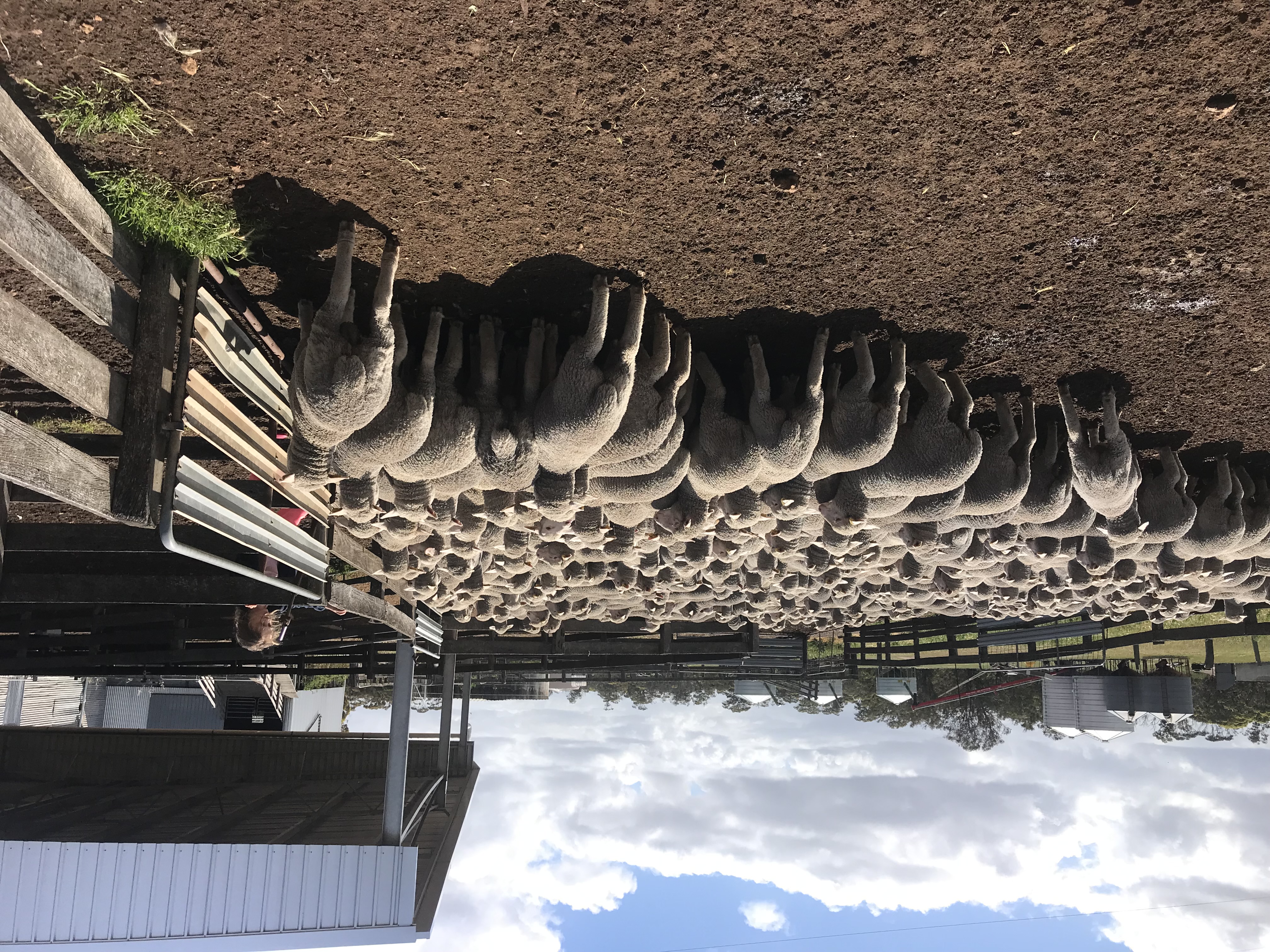Utilising eiD to maximise genetic gains through ram breeding
Producer case study: Marcus Sounness
Sheep production in a highly variable climate
Marcus Sounness runs a family-owned 4,000ha mixed crop and sheep property at Amelup, in southern WA. It sees an average annual rainfall of 400mm, although this can vary by as much as 200mm each year.
Of the 4,000ha, approximately half is cropped into canola and cereals while, the other half is reserved for the self-replacing merino and prime lamb enterprise. The farm currently stocks 5,000 merino breeding ewes, of which around half are mated each year to merino rams and the other half to white Suffolk rams to produce terminal lambs.
Paper Collar Gully farm was purchased by the Sounness family in 1907. Marcus travelled and studied Agribusiness and Farm Management at Muresk, as well as completing a Master of Science at UWA, before returning to the farm full time in 2004.
Amelup has a high degree of seasonal variability in both temperature and rainfall. This makes finding sheep with the right genetics to handle this variability quite challenging. Some years are great, with early starts to the season and warmer weather, making it an ideal area for growing lucerne, which the family has been doing for a few decades now.
“The tough thing about it is one year you’re carting water… we carted a lot of water in 2019, then in 2021 it was too wet, so it just goes from one extreme to the other,” said Marcus. In 2019 the farm received around 200mm of rainfall and around 500mm in 2021.
To make things more challenging, the farm lost a significant portion of its feedbase in 2023 when a spraying contractor misread a chemical drum and wiped out 240ha of canola. “It was a fair loss, but it was wondering what I was going to feed the sheep that kept me up at night,” Marcus said. “It put the system under a lot of pressure, plus it was a dry year and really hard to quit sheep that year as well so a lot of the lucerne got flogged, which has carried over to the following years.”
These challenges drove Marcus to take control of his Merino genetics to ensure the ewe flock is equipped with the resilience needed to cope with fluctuations in feed availability. It’s why Marcus is part of the MLA-funded Producer Demonstration Site (PDS) ‘Utilising eID Technology and Data Management’ managed by AgPro Management.
Using technology to breed the right sheep
Marcus has been breeding his own Merino rams for the last five years, with a focus on breeding more resilient sheep. A flock profile test a couple of years ago gave him an idea of where his flock was sitting genetically compared to the broader Australian Merino industry.
“We realised if we wanted to continue to improve, we would have to be buying in quite elite rams and I just found that there wasn’t many of them and we were always trying to compete with other studs to buy them. I figured if we can’t beat them, then join them. So that’s how we first got into doing and looking to breed our own,” he said.
“I look for balanced traits. Maybe it would be easier if I just targeted wool growth or meat production but I really try to focus on a broad range of traits. Plus, we’ve had a non-mulesed flock for the last 15 years, so we have those traits to continue selecting on,” he commented.
Marcus targets worm- and dag-resistant sheep with low body wrinkle, while also balancing growth, muscle, fat and wool production.
"Now that Sheep Genetics have introduced the Sustainable Merino index, that’s a lot closer to what we’re trying to achieve than the Dual Purpose Plus index ever was.”

Image 1 Marcus’ daughter Alba with the nucleus lambs in 2021
A critical part of breeding his own rams is collecting phenotype data on the ewes and lambs, which wouldn’t be possible without the use of electronic Identification (eID) tags. Marcus has invested in a TruTest XR5000 data collector, a XRS2 scanning wand and a Clipex weighing and autodrafting system to help with the scale of data collection he is trying to achieve. All the data that gets collected is recorded against the individual sheep’s eID.
“We collect a lot of data. Fleece weights and individual wool tests, weaning and yearling weights, pregnancy scan results and a couple of visual scores. Everything gets a breech wrinkle score plus black wool score in the cradle, and we’re going to try to start doing wool character scores this year,” said Marcus. To complement the phenotype data collected, every sheep gets a full 50K genomics test which delivers Australian sheep breeding values (ASBVs) to benchmark them against the national Merino flock. This way, Marcus can be sure he is always selecting premium genetics.
“Genomics gives you access to the hard-to-measure traits like eating quality and lean meat yield,” said Marcus.
The data Marcus collects is primarily done up to hogget age on all ewe and ram lambs, who are then classed to separate the culls from the tops. This is backed up by visual classing of older ewes to identify any hoof or leg structure issues, which may not be identifiable at an early age. Sheep affected by flystrike are also culled and sold at the first opportunity.
The eIDs have also become powerful tools at classing time - allowing Marcus to draft mobs into their sire groups to see what traits are common against certain sires. This gives him an idea of joining decisions that worked and which didn’t.
“Once you’ve drafted them into their sire lines, it’s easy to see if a particular sire has thrown a lot of wrinkle, for example,” he said.
Goals for the future
Now that he understands where his flock sits against the national profile, Marcus’ next goal is to streamline his genetics so the flock can make more rapid genetic progress.
“Looking at our flock, you can imagine it’s like a shotgun has gone off - it’s a pretty wide grouping, so we’re trying to tighten that up a bit and push it in the right direction,” he said. “Using programs like Matesel, as well as genomics, has accelerated our progress but we’re not quite there yet.”
Marcus uses his breeding objective to keep him focused on traits that matter to his enterprise.
“I look at targeting specific percentile bands within certain ASBVs, so I know I’m aiming for the right type of sheep,” he said. This does require a degree of flexibility while the flock is so genetically diverse.
“Because there’s so much variation in the flock at the moment, it’s tricky to be specific without culling out huge numbers from the nucleus.”
Given the market for cull rams is limited, Marcus has also increased the number of data points he collects so he can make classing decisions earlier and before the rams reach maturity. Genetic testing has helped make this possible, giving Marcus better insight into the genetic merit of each animal from a much younger age.
Aside from genetics, Marcus is looking to start feed lotting lambs to reduce the stress on his pasture system in tight years. “It’s something I’ve been reluctant to take up because the margins in finishing lambs are always going to be small, but the store market has just become too risky,” he said. Marcus is currently working to build feedlot pens and ensure feed and water delivery to each pen maximises labour efficiency. This will open opportunities to potentially buy in lambs to finish from neighbouring farms, increasing the business’ diversity.
Lessons for other farmers
Marcus is very satisfied with the success of his ram breeding operation so far. “There’s just such limited non-mulesed studs in WA that operate in a similar environment, so to us, it’s been well and truly worth it,” he said. With five years of breeding behind him now, Marcus has had time to iron out some of the wrinkles in his data collection operation and has useful tips for anyone considering to embark on this journey themselves.
“DNA can be quite expensive, but it really is worth it,” he said. “We didn’t do the first lot of nucleus ewes but we’ve since ended up going back and redoing them because it created a big hole in the data. It’s just such a powerful tool for making selection decisions.”
Marcus also suggested that producers looking to take individual wool tests should collect the sample off the sheep before they get into the shearing shed. “It’s just too hard to find the spray mark when the fleece gets to the table or on the board and you can’t always be sure you’re getting a representative sample. We’ve found doing them in the race before the shearers get there is better.”
Marcus also suggested you don’t need a lot of tools to get started with data collection and drafting. “We try to keep it simple. We did a lot with just a wand in the race and an elaborate dot system before using the autodrafter,” he said. “And I’ve always worked with a network of professionals to help tackle any issues that pop up on the tech side of things.”
Looking to the future, Marcus is conscious of keeping his breeding objective dynamic to continue meeting markets five and ten years from now. “We need to keep an eye on our intramuscular fat (IMF) and eating quality traits – chicken and pork are cheap, so lamb needs to keep tasting good in order to compete,” he said.
More information
Refer to Integrity Systems Company’s resources for further guidance on Sheep and goat eID.
Use this resource to learn more about selecting the correct NLIS-approved sheep and goat devices.
Learn more about the Sheep and goat eID National Implementation Plan.
Follow the project Utilising eID technology and data management | Meat & Livestock Australia



